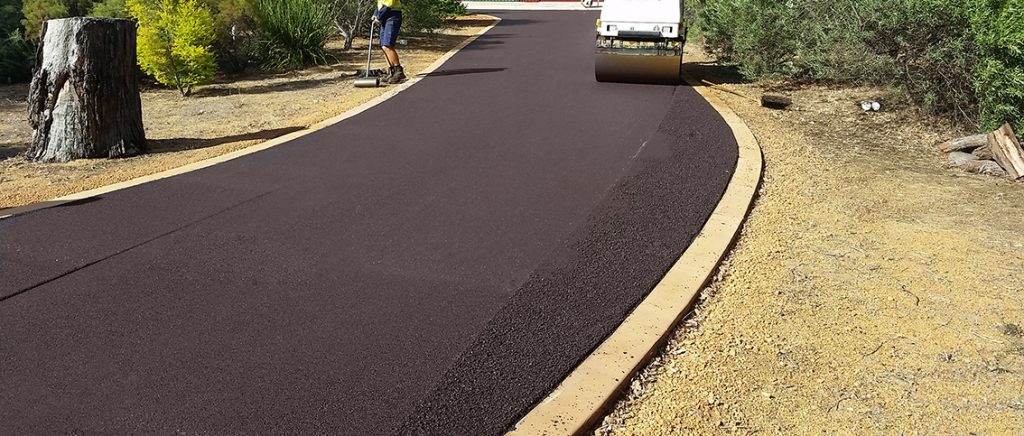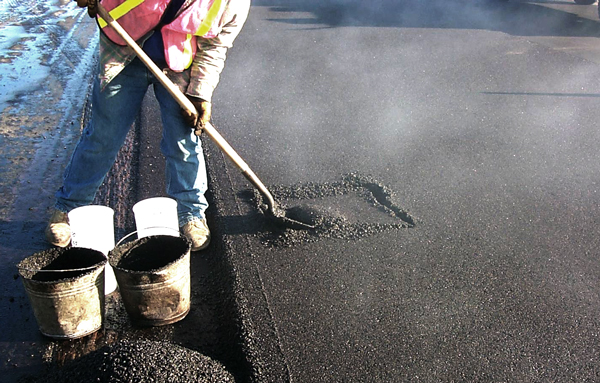Unlocking the Tricks of Warm Mix Asphalt Modern Technology
Discovering the depths of warm mix asphalt modern technology discovers a globe where meticulous processes and specific formulations assemble to form our roads and facilities. The combination of binders, accumulations, and fillers isn't simply a construction task however a calculated orchestration of durability and effectiveness.
Importance of Warm Mix Asphalt
Warm Mix Asphalt plays a critical duty in modern facilities growth due to its toughness and cost-effectiveness. As the most typically utilized paving product for roads, freeways, and parking area, Hot Mix Asphalt supplies an array of advantages that add to its significance in building and construction projects. One essential benefit is its capacity to hold up against heavy website traffic lots and rough climate condition, giving a trusted and long-lasting surface for transportation networks. In Addition, Warm Mix Asphalt is affordable in both first building and long-term maintenance, making it a favored selection for several facilities tasks.
The durability of Warm Mix Asphalt stems from its composition, which consists of accumulations, binder, and filler products that are meticulously picked and mixed to satisfy specific efficiency requirements. On the whole, the importance of Warm Mix Asphalt in infrastructure advancement can not be downplayed, as it proceeds to be a cornerstone of contemporary construction methods.
Components of Asphalt Mixes
The composition of asphalt blends contains carefully selected accumulations, binder, and filler materials that are essential for attaining details performance requirements. Accumulations are the key element of asphalt blends, providing strength and security. These accumulations can be natural, such as gravel or smashed stone, or artificial, like recycled materials from old sidewalks. The binder, generally bitumen or asphalt cement, holds the accumulations together and supplies adaptability and longevity to the mix. The selection of the binder is crucial as it straight influences the mix's performance in various weather. Fillers, such as hydrated lime or Rose city cement, are utilized to improve the mix's workability and aging resistance. Angled Parking.
The mix and proportion of these parts play a significant role in figuring out the quality and efficiency of the asphalt mix. Engineers thoroughly develop the mix to fulfill specific requirements, thinking about factors like traffic volume, environment problems, and sidewalk life-span. Appropriate option and balancing of aggregates, binder, and fillers are vital for creating durable, durable asphalt sidewalks.
Mixing and Manufacturing Techniques

Once the aggregates are picked, the binder, typically asphalt concrete, is contributed to bind the materials together. The binder's high quality and amount substantially impact the mix's resistance, flexibility, and strength to environmental factors. Additionally, fillers like moisturized lime or Portland cement may be included to improve specific features of the asphalt mix, such as its workability or dampness resistance.
Throughout manufacturing, the accumulations and binder are heated up, generally in between 250-325 ° F(121-163 ° C ), to facilitate mixing and guarantee correct covering of the aggregates. The blending process must be detailed to accomplish a homogeneous mix that promotes the wanted efficiency characteristics of the asphalt. Numerous techniques, such as set blending or drum more helpful hints blending, are employed to achieve constant and top notch asphalt blends for building jobs.
Aspects Influencing Asphalt Performance
Factors affecting asphalt efficiency incorporate a series of variables that impact the sturdiness, long life, and total high quality of asphalt sidewalks. One vital element is the top quality of products utilized in the asphalt mix. The type and resource of accumulations, the binder quality, and the additives all play a considerable role in figuring out the performance of the asphalt sidewalk. The rank of aggregates is critical as it influences the mix's stability, resistance, and workability to breaking and rutting.

Layout considerations, such as pavement thickness and drain, are necessary in ensuring the lasting performance of the asphalt sidewalk. By thoroughly thinking about these elements, service providers and designers can enhance asphalt efficiency and improve the service life of pavements.
Lasting Practices in Asphalt Innovation

In addition, the advancement of warm-mix asphalt (WMA) innovations has obtained traction in current years. WMA enables the production and placement of asphalt mixes at reduced temperatures contrasted to traditional hot-mix asphalt, resulting in minimized power intake and greenhouse gas discharges. Additionally, the use of permeable asphalt mixes can aid alleviate stormwater drainage issues by enabling water to penetrate through the pavement and right into the ground, advertising all-natural water filtration and reenergize procedures. By applying these lasting this content practices, the asphalt market can contribute to constructing a much more eco friendly and resilient facilities network.
Conclusion
Finally, warm mix asphalt technology plays a crucial function in see this here modern infrastructure development as a result of its sturdiness and cost-effectiveness. By carefully stabilizing elements, utilizing appropriate mixing strategies, and taking into consideration various factors, engineers can produce premium asphalt mixes that stand up to hefty website traffic loads and rough weather condition problems. Embracing sustainable techniques, such as making use of recycled products and warm-mix modern technologies, even more improves the ecological kindness of asphalt innovation.
Mixing and manufacturing techniques in hot mix asphalt technology involve the exact mix and handling of aggregates, binder, and fillers to develop a high-performance and sturdy asphalt mix.Factors influencing asphalt performance include a range of variables that influence the sturdiness, longevity, and general top quality of asphalt pavements. Lasting methods in asphalt innovation encompass numerous efforts aimed at minimizing the ecological impact of asphalt production and paving procedures. By integrating recovered asphalt sidewalk (RAP) and recycled asphalt tiles (RAS) right into new asphalt blends, the industry can dramatically reduce the consumption of raw products and energy, while also decreasing land fill waste.
WMA allows for the production and positioning of asphalt blends at reduced temperatures compared to standard hot-mix asphalt, resulting in lowered energy usage and greenhouse gas discharges.